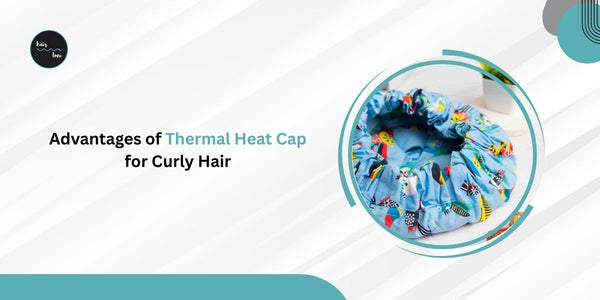The Ultimate Ayurvedic Hair Care Routine: Part 1

Do you realize that your unhealthy hair is a reflection of your poor nutrition and way of life? Yes! Traditional Ayurvedic science emphasizes the importance of hair health in relation to what you eat and how you live.
Aside from topical treatments with medicinal herbs, Ayurveda incorporates the notion of healthy Ahara-Vihara (food and lifestyle), which helps the overall well-being of your body and mind, as well as the health of your hair.
Ayurveda’s holistic approach to hair care necessitates constant hair care practice for healthy hair. This means your hair detangler brush might not be of much use if you don’t know how to comb properly.
Let’s go through exactly what it is and how you can implement it.
The Essential Steps of Ayurvedic Hair Care
1. Understand Your Hair Type
The three vital energies Vata, Pitta, and Kapha control our body processes, according to Ayurveda. Each person is a mix of these tridoshas, with one or two doshas predominating. This identifies your hair type and the state of your hair’s health.
Hair Type A. Vata
If you have Vata-dominant Prakriti, you will have Vata hair. Vata dosha is balanced by providing proper nutrients to your hair follicles. A typical Vata hair type has thin, straight hair with high porosity. When the Vata dosha in your body becomes aggravated, it causes dryness of your scalp and hair, as well as very low sebum production. This eventually leads to dry, frizzy hair, split ends, and hair loss.
Hair Type B. Pitta
Pitta hair is the result of a Pitta-dominant Prakriti. Pitta is in charge of metabolic activity in the hair, as well as the generation of colors and hair proteins. Pitta hair is often wavy and modest in thickness. Pitta imbalance causes premature greying, blocked follicles with bacteria buildup, scalp irritation, redness, hair loss, and other symptoms.
Hair Type C. Kapha
If you have a Kapha dominating Prakriti, you will have Kapha hair. Kapha energy is in charge of your hair’s structure and lubrication. The hair of a Kapha person is thick, shiny, and curling. Any Kapha imbalance causes overproduction of sebum on your scalp, which finally leads to oily dandruff with a greasy scalp, itching, hair loss, and other problems.
Understanding your hair type and the current status of your dosha levels allows you to incorporate particular Ayurvedic herbs into your hair care regimen that address your individual hair demands.
2. Select Hair Oil And Shampoo Depending On Your Hair Type
Make certain that your basic hair products, such as hair oil and shampoo, have Ayurvedic herbs that operate on your exacerbated dosha levels. Using improper hair products might aggravate your hair’s condition and generate a dosha imbalance. Use a thermal heat cap before/after using oil in your hair to strengthen its effects.
Here is a list of a few dosha-specific herbs to look for in hair care products:
A. Vata Balancing Herbs
Palandu (onion), Gunja (Rosepea), Yashtimadhu (Licorice), Devdar (Cedar), Krishna Tila (black sesame), Saireyaka (Barleria Prionitis), Ashwagandha (Withania Somnifera), Shatavari (Asparagus Racemosus), and others.
B. Pitta Balancing Herbs
Yashtimadhu (Licorice), Japa (Hibiscus) Kamala (Nelumbo Nucifera), Nimba (Neem), Lodhra (Symplocos Racemosa), Karanja (Pongamia Pinnata), and other plants.
C. Kapha Balancing Herbs
Grapeseed, Kushta (Saussurea Costus), Methika (Fenugreek), Karpoora (Camphor), Jyotishmathi (Celastrus Paniculatus), Daruharidra (Berberis Aristata), and others.
D. Tridosha Haras (Herbs To balance All Three Doshas)
Kumari (Aloe Vera), Brahmi (Bacopa Monnieri), Bhringraj (Eclipta Alba), Amalaki (Indian Gooseberry) [4], Tagara (Valerian root), and other herbs




